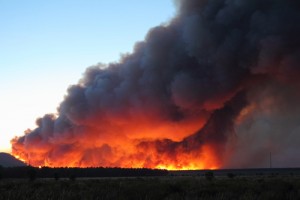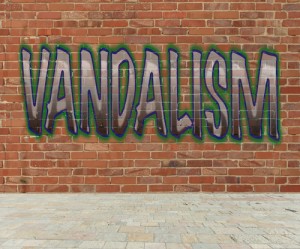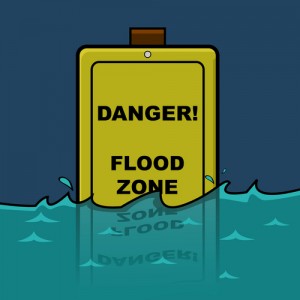Last week in Performance Arts Cmty. Improvement Dist. v. ACE Amer. Ins. Co., 2015 WL 3491292, 2015 U.S. Dist. LEXIS 71592 (W.D. Mo., June 3, 2015), a federal court in Missouri shot down an insured’s arguments that a wall collapse caused by the excluded peril of defective design was a covered ensuing loss under a builder’s risk policy. The developer admittedly erred in calling an for excess amount of concrete slurry to be pumped behind the structure, but the policyholder contended that the collapse that that mistake caused was a separate loss by “excessive lateral pressure.” The court analogized to that to arguing that the collapse of a defectively-designed building was a separate loss caused by the covered peril of gravity.
 The policyholder had contracted for the construction for a parking garage adjacent to a performing arts center in Kansas City, and the project included the installation of a 50’ high concrete retaining wall between the structure and an adjacent limestone rock face. The original design called for up to 18” of concrete slurry to be poured between the wall and the limestone embankment, but, at the general contractor’s insistence, it was modified to permit up to 36” of the fill material to be installed. While the slurry was being pumped in place, the wall cracked and failed, and it was uncontested that the change to 36” of fill was a design defect.
The policyholder had contracted for the construction for a parking garage adjacent to a performing arts center in Kansas City, and the project included the installation of a 50’ high concrete retaining wall between the structure and an adjacent limestone rock face. The original design called for up to 18” of concrete slurry to be poured between the wall and the limestone embankment, but, at the general contractor’s insistence, it was modified to permit up to 36” of the fill material to be installed. While the slurry was being pumped in place, the wall cracked and failed, and it was uncontested that the change to 36” of fill was a design defect.
The insured made claim under its builder’s risk policy, but the carrier denied because the contract of insurance barred coverage for a loss caused by “[e]rror, omission or deficiency in design, plans, specifications, engineering or surveying.” That exclusion was prefaced by an ensuing loss exception that restored coverage when “direct physical loss or damage by an insured cause of loss ensues,” however. The policyholder brought suit, contending that excessive pressure caused by the additional fill constituted a covered ensuing loss. Read more ›

 The policyholders owned a home with a detached garage in Alpine, Arizona. Beginning on May 29, 2011, eastern parts of the state and western New Mexico were devastated by a massive blaze known as the Wallow Fire – we published a post about an Arizona district court decision concerning business interruption loss that stemmed from that conflagration last month. The fire consumed the detached garage and all of the vegetation on the nearby hillside, but it did not reach the house. On August 6, 2011, however, one month after the Wallow Fire had been contained, there was a mudslide on the hillside, and mud and runoff water from flooding destroyed the home.
The policyholders owned a home with a detached garage in Alpine, Arizona. Beginning on May 29, 2011, eastern parts of the state and western New Mexico were devastated by a massive blaze known as the Wallow Fire – we published a post about an Arizona district court decision concerning business interruption loss that stemmed from that conflagration last month. The fire consumed the detached garage and all of the vegetation on the nearby hillside, but it did not reach the house. On August 6, 2011, however, one month after the Wallow Fire had been contained, there was a mudslide on the hillside, and mud and runoff water from flooding destroyed the home. Instead of contending that the “requirements in case of loss” language mandated the tapes’ production, of course, the insurer should have sought them through regular discovery and moved to compel if they weren’t forthcoming. It is hard to see how the policyholder could have resisted that motion given her allegations of bad faith.
Instead of contending that the “requirements in case of loss” language mandated the tapes’ production, of course, the insurer should have sought them through regular discovery and moved to compel if they weren’t forthcoming. It is hard to see how the policyholder could have resisted that motion given her allegations of bad faith. Early last month a federal court in Indianapolis barred a policyholder from seeking the claims and underwriting files of the defendant carrier’s reinsurer in
Early last month a federal court in Indianapolis barred a policyholder from seeking the claims and underwriting files of the defendant carrier’s reinsurer in  The insured owned a house and secured a homeowners policy that also extended coverage to his mortgagee. The mortgage company instituted foreclosure proceedings and the policyholder vacated the dwelling, but only after removing fixtures and damaging property to the tune of $246,025. The mortgagee’s subsequent insurance claim was denied, and litigation ensued.
The insured owned a house and secured a homeowners policy that also extended coverage to his mortgagee. The mortgage company instituted foreclosure proceedings and the policyholder vacated the dwelling, but only after removing fixtures and damaging property to the tune of $246,025. The mortgagee’s subsequent insurance claim was denied, and litigation ensued. The Keystone State has not seen the dramatic uptick in earthquake activity that has shattered both nerves and property in Oklahoma in recent years. Because of the hydrocarbon-rich Marcellus Shale formation, however, it remains a jurisdiction with more oil and gas drilling than all but a handful of other states, and many homeowners have purchased earthquake endorsements in view of the widely-publicized rise in seismic activity in many such places.
The Keystone State has not seen the dramatic uptick in earthquake activity that has shattered both nerves and property in Oklahoma in recent years. Because of the hydrocarbon-rich Marcellus Shale formation, however, it remains a jurisdiction with more oil and gas drilling than all but a handful of other states, and many homeowners have purchased earthquake endorsements in view of the widely-publicized rise in seismic activity in many such places.  The property at issue was a former slaughterhouse in Askum that had been vacant since 2005. The policyholder (Brothers Future Holdings) acquired it in 2007 intending to use it for a contract cooking venture, but that business turned out to be stillborn. Property insurance was duly procured, based on an application reciting the structure was “100% owner-occupied.” The mortgagee came on board in August of 2007, and the insurer’s agent was contacted by the mortgage company and issued an “Evidence of Property Insurance” document to the mortgagee indicating that coverage was in place.
The property at issue was a former slaughterhouse in Askum that had been vacant since 2005. The policyholder (Brothers Future Holdings) acquired it in 2007 intending to use it for a contract cooking venture, but that business turned out to be stillborn. Property insurance was duly procured, based on an application reciting the structure was “100% owner-occupied.” The mortgagee came on board in August of 2007, and the insurer’s agent was contacted by the mortgage company and issued an “Evidence of Property Insurance” document to the mortgagee indicating that coverage was in place. Last month, we discussed a recent Texas Supreme Court decision that enforced an anti-concurrent causation (ACC) clause. The month of April also saw a unanimous panel on Iowa’s intermediate level appellate court do the same thing. In
Last month, we discussed a recent Texas Supreme Court decision that enforced an anti-concurrent causation (ACC) clause. The month of April also saw a unanimous panel on Iowa’s intermediate level appellate court do the same thing. In  The policyholder White Mountain owned a hospital in Springerville, Arizona. On May 29, 2011, a blaze was started by an abandoned campfire in the nearby Bear Wallow Wilderness Area. The wildfire ultimately burned 841 square miles in eastern Arizona and western New Mexico, and it led to the temporary evacuation of Springerville. Residents weren’t allowed to return until June 13th, and the hospital itself was closed until the following day.
The policyholder White Mountain owned a hospital in Springerville, Arizona. On May 29, 2011, a blaze was started by an abandoned campfire in the nearby Bear Wallow Wilderness Area. The wildfire ultimately burned 841 square miles in eastern Arizona and western New Mexico, and it led to the temporary evacuation of Springerville. Residents weren’t allowed to return until June 13th, and the hospital itself was closed until the following day. On the TV show “Friends,” Phoebe Buffay used to entertain patrons at the Central Perk coffee shop with her song “Smelly Cat” (“Smelly cat, smelly cat, what are they feeding you, . . . “). The lyrics would have resonated with Doug and Gayle Mellin, the owners of a condominium in Epping, New Hampshire. After they moved in, the Mellins noticed a cat urine odor coming from a downstairs neighbor’s unit through an open plumbing chase in the kitchen wall. The stench was so severe that the town building inspector directed the couple to relocate temporarily and have the unit professionally remediated, but efforts to do that were unsuccessful. The policyholders vacated permanently after living there only three months.
On the TV show “Friends,” Phoebe Buffay used to entertain patrons at the Central Perk coffee shop with her song “Smelly Cat” (“Smelly cat, smelly cat, what are they feeding you, . . . “). The lyrics would have resonated with Doug and Gayle Mellin, the owners of a condominium in Epping, New Hampshire. After they moved in, the Mellins noticed a cat urine odor coming from a downstairs neighbor’s unit through an open plumbing chase in the kitchen wall. The stench was so severe that the town building inspector directed the couple to relocate temporarily and have the unit professionally remediated, but efforts to do that were unsuccessful. The policyholders vacated permanently after living there only three months.